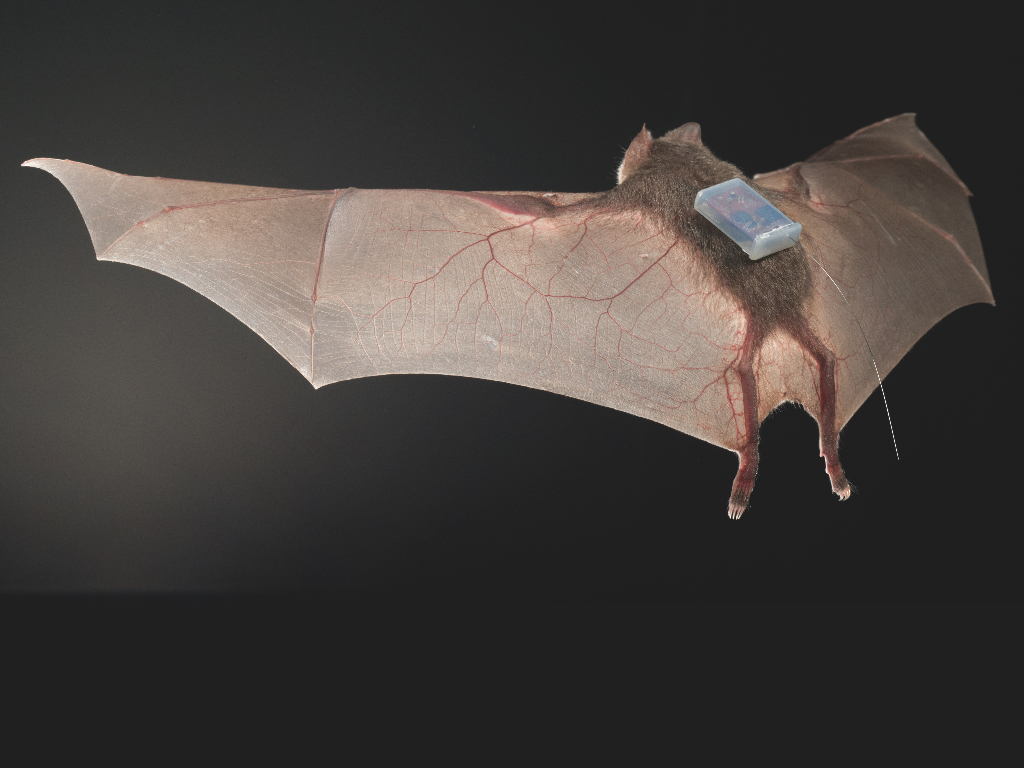

Nothing screams spooky season quite like vampire bats. The leathery wings, snarling snouts, and of course, the blood-exclusive diet, all make these one-of-a-kind mammals into real-life monsters. However, in reality these seemingly terrifying creatures are actually quite friendly—at least with one another.
A study published on Halloween in Cell Biology found that vampire bats develop and maintain social bonds resembling friendships. Biologists knew these creatures were uniquely hospitable with one another due to their rare grooming and food-sharing habits. But until now, scientists had been unable to prove they formed long-standing relationships.
Researchers Gerald Carter, an associate professor at Ohio State University, and Simon Ripperger, a postdoctoral fellow with the Smithsonian Institute, hypothesized that bonds between bats developed during captivity would continue after they were released back into the environment. For the study, the researchers had two groups of bats commingle: one cohort was captive-born and another (200 of them) was from a wild colony.
To induce relations, the scientists fasted each bat one at a time. When a bat is starved of blood for a night their peers will regurgitate last night’s dinner as a “food donation” and comfortingly groom one another. According to Carter, females are the only ones to perform this behavior. (It seems to Carter that males are too concerned with fighting one another over established territories to form friendships.)
After spending 22 months in captivity, the bats were released back to their home—a hollow tree located on a Panamanian cow pasture that reeks of bat poop. To track the bats’ social interactions, the team glued tiny sensors developed by Ripperger and his colleagues who are electrical engineers and computer scientists to the back of the bats. Lighter than a penny and around the size of a fingertip, these automated sensors are unique in their ability to track social networks of small animal groups by measuring their proximity to one another. They, unlike other proximity technology, are able to capture evolving relationship webs even in hard-to-access sites like small caves, or in this case, stinky hollow trees.
What these sensors found was that bats with a bond in captivity clustered close together despite being able to go anywhere or associate with any of their other 200 roommates.
“Our findings demonstrate this method of high-resolution tracking can reveal relationships that have ecological consequences,” says Carter. Prior scientific evaluations of “friendship” in animals comes almost exclusively from research in primates. “We can now see some animal relationships are independent of setting.”
However, not all friendships withstood the test of time. After only six days, the captive-born bats took flight after failing to assimilate with the colony. Even the ones born to wild bats were ousted. It is important to note that the study’s observations only chronicle eight days due to the sensor measuring the bats proximity to one another falling from one of the test subject’s backs. Therefore, researchers cannot be sure how long these “friendships” last past a week.
“It is a neat illustration that shows how the social structures of animals depend both on internal preferences they have for each other, but also the external environment because not all bonds lasted,” says Carter who has studied vampire bats for a decade. “Even in a completely different setting, these bats were still attracted to each other.”
If you are following along, sustaining 20 or so blood-sucking mini monsters required a lot of blood. To sustain these vampire-like creatures, twice a month Carter and Ripperger drove to a local slaughterhouse to fill a five-gallon bucket full of burgundy beef blood. They then drove the car hastily back to the lab (blood spoils quickly) where they froze the gory goo in bottles. Only once did they spill the entirety of the bucket’s contents in Carter’s backseat. When feeding time came around, the frozen blood was dispensed through plastic tubes that formed small reservoirs of the liquid.
“The reservoirs are usually used for giving water to birds, but we just use blood,” says Carter. Him and Ripperger laugh. “We once had an assistant faint when she saw this.”
No matter how vampire bats feast on blood, one thing seems true—those who share their morbid meal are on the fast track to friendship.